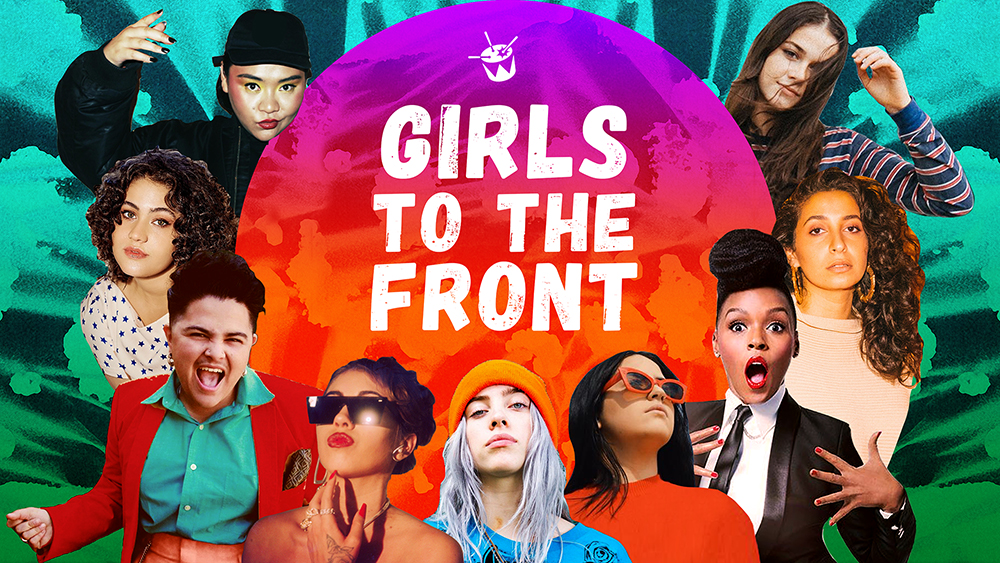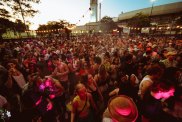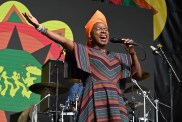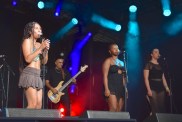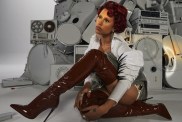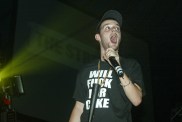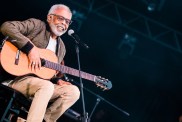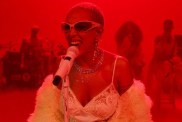Triple j journalist, Ange McCormack has collated the numbers and filed her annual International Women’s Day ‘By The Numbers’ Report.
The report looks at the gender gap in the music industry, crunching the numbers on representation, lineups, accolades, the pay gap, and where it starts: education.
Since last year’s report we’re still dealing with some dismal results for gender equality in the industry, but we’ve also seen so much to celebrate. There’s still a ways to go in terms of representation but the year on year stats show improvements in terms of festival lineups, grants, and the pay gap.
Let’s take a look.
Radio Play
Radio play was still dominated by men in 2018. Out of the top 100 most-played songs across 58 Australian radio stations, 52 tracks were by male artists or all-male groups. The remaining 48 tracks were shared. Just 21 per cent of the songs were from female artists or all-female groups, 14 per cent were by mixed groups (groups with both males and females), and 13 featured a female vocalist.
Hottest 100
2017’s Hottest 100 was triple j’s most diverse year yet. 2018 didn’t do as well on the gender diversity front. 63 of the 2018 poll’s tracks were by solo male artists or all-male groups. Leaving 37 tracks shared between solo female artists, mixed groups, songs with a female-feature, and non-binary artists.
ABC Radio Feature Albums
Across ABC’s radio stations: triple j, Double J, and triple j Unearthed, feature albums saw their best year so far for representation. 2018 was the first year all three stations featured more than 40 per cent of albums women artists or with a woman in their group. Double J saw a 17 per cent improvement in gender diversity.
Festival Lineups
Diverse representation on festival lineups made big strides in the last year. Falls Festival went from just 31 per cent of their lineup being acts with at least one woman to a solid 50 per cent. Listen Out had a four per cent improvement in representation of female acts on their lineup bringing their numbers 41 per cent, which is huge considering in 2015 Listen Out was sitting on nine per cent. The report points out that Instagram’s @lineupswithoutmales deserves a mention here, for their work holding festivals accountable for their representation. Falls Festival, Groovin’ The Moo, Splendour in the Grass, and Listen Out improved improved on last year. Laneway Festival dropped 6 percentage points compared with its 44 per cent effort back in 2017.
Education
As always, a really interesting tidbit is where it all starts: education. It’s normally a pretty even score, which doesn’t translate into the industry. In 2019 more girls (52 per cent) took on a music subject in their senior year of schooling than boys. In universities though, females made up 45 per cent.
Who’s in charge
As for those leading the industry, it’s still dominated by men but the good news is it’s getting better. 39 per cent of those fancy boardroom roles are now filled by women, which is up by four per cent. Some credit goes to ARIA who added four female directors to its board after previously having none.
Artist management roles are seeing more equality with women filling 42.5 per cent of roles.
Indie record labels are steadily improving their score but have still only filled in 36 per cent of their leadership roles with women.
Award & Grant Winners
Every award analysed — aside from the J Award — improved in diversity in the nomination stage. The APRA Award boasted the best set of noms in 2018 diversity-wise with 53 per cent going to women artists or acts with at least one woman. The J Award saw a 15 per cent decrease in female representation, dropping to 40 per cent. The Australia Council for the Arts gave women for money than men with 58 per cent of grants going to women.
Earnings
Only 19 per cent of APRA payments were made to women in 2018, which reflects the percentage of women members in APRA — about one in five. APRA is the organisation that pays Australian artists royalties. APRA pays men and women the same royalties but women are earning less on average. Meaning more of the songs written are by men or more of their work is played more often or in better-paying spots. The pay gap between male and female APRA members is narrowing, with the report indicating that women songwriters in 2018 earned 88 cents for every $1 a male songwriter got. That’s an 11 cent increase from 2017.
Achievements
Women had a stellar year in music, despite the adversity. We saw Her Sound, Her Story on screens around the nation, a heap of songs on women’s issues by artists like Camp Cope, WAAX, and Courtney Barnett to name a few, and Kasey Chambers became the twelfth woman to be inducted into the ARIA Hall of Fame.
Read the report in full here.
